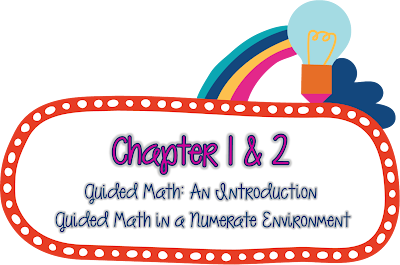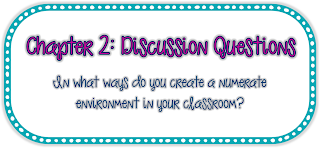I am linking with Sarah and Courtney today from Adventures in Guided Math for the Guided Math in Action Book Study. Today we will be discussing chapters 3 and 4.
Chapter 3 focuses on managing the math workshop. The first thing Dr. Nicki Newton mentioned in the chapter is to start with clear rules and expectations. She also suggest that you start immediately. Every year I start introducing my workshops the first week of school. Usually I introduce them using a mentor text and having a discussion about what the workshop should look like.

Question 1: My teacher toolkit in the past was housed in a bath caddy from Walmart because it was portable and convenient. I kept my whiteboards, markers, and materials in it. Last year I started organizing my small groups materials in this book and binder holder system from Really Good Stuff .
because it was portable and convenient. I kept my whiteboards, markers, and materials in it. Last year I started organizing my small groups materials in this book and binder holder system from Really Good Stuff . I really like organizing my small group materials in this system because it allows me to differentiate for each group. In addition to using this book and binder holder system I plan to have a small drawer system to house all the manipulatives and games that I will be using with the small groups so that everything is together in one central location next to my small group area.
I really like organizing my small group materials in this system because it allows me to differentiate for each group. In addition to using this book and binder holder system I plan to have a small drawer system to house all the manipulatives and games that I will be using with the small groups so that everything is together in one central location next to my small group area.
Question 2: My students toolkits were a math journal, dry erase marker, and eraser. After attending math institute this year for my county I will be developing math folders that will become part of the students toolkits.
Question 3: Routines and expectations are established in my classroom from day one . They are established through modeling, practice, mentor texts, and anchor charts. I launch math workshop similarly to the Daily 5 reading model. I only focus on one aspect of the workshop a day. I use the acronym M.A.T.H for my workshop, which I found on Pinterest. M-math facts, A-at your seat, T-time with teacher, and H-hands on.
Chapter 4 focuses on forming guided math groups. This chapter discusses using data to help you form groups. Dr. Nicki Newton suggests that flexible grouping is utilized to help with fluid movement and that you uses a record keeping system. I really like she mentioned that the students were group using the four main levels:
1. Novice - I don't understand the concept.
2. Apprentice - I understand the concept but need some help.
3. Practitioner - I am working on grade level and could work on the concept independently.
4. Expert- I am working above grade level and could be challenged.
This is how I group my students. This year I would like to make an anchor chart like this one that I found on Pinterest.
Question 1: I meet with small groups everyday. Usually I only meet with one group a day.
Question 2: The groups are very fluid. I use the flexible grouping style that Dr. Nicki Newton mentioned in the book. A pre-test is given to my students at the beginning of each unit. I use the data to put the students into groups. The groups usually stay the same throughout that unit and change every new unit. I also use the data to see what strands each student needs to focus on and sometimes pull remediation groups based on the strands. For example, I noticed that 5 students did not understand expanded form from the place value unit. Then I would pull the 5 students even if they were in different groups for the unit to work on that strand.
Question 3: Last year I started using this record keeping template from Terri Thornton from The Creative Apple. If you click on the image you can grab your own copy.
I like this template because I allows me to keep track of what each student needs to work on individually as well as in small groups. I tried the sticky note method of record keeping but had a hard time keeping up with all the sticky notes. I keep this on a clipboard and it is much easier for me to manage. I use the same template for a whole unit as opposed to weekly, that way I can track the notes for an entire unit.



















